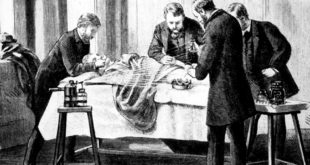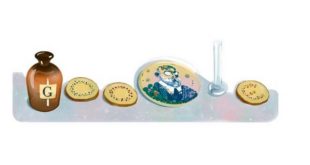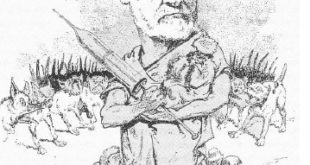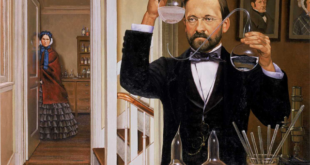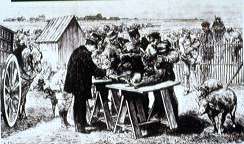
In the last quarter of the 19th century, scientists identified bacteria as the cause of many diseases, including cholera, typhoid fever, anthrax, plague, diphtheria, and tuberculosis. In France microbiologist and chemist Louis Pasteur had noticed that cultures of fowl cholera lost their virulence if they were left inactive for two weeks. When chickens were inoculated with the old cultures, they did not become ill. Furthermore, the birds remained resistant to the disease even when they were inoculated with fresh cultures. He then experimented with anthrax, a disease that was killing many cows, sheep, and goats in the countryside. Pasteur found that by keeping the anthrax bacilli for two weeks at a temperature of 42 to 43 degrees Celsius, he could greatly weaken their virulence.
In 1881 he and his colleagues inoculated 31 farm animals with the weakened anthrax cultures; a matching set of 31 animals served as controls. Several weeks later, they inoculated both sets of animals with fresh, virulent anthrax bacilli. Most of the control animals died, but of the animals given the weakened anthrax cultures, only one sheep died. Pasteur coined the term “vaccine,” after the Latin vacca, or cow, in honor of Edward Jenner and his milkmaids.
Following this success, vaccines were developed against tuberculosis, cholera, typhoid, and other diseases. Perhaps the most dramatic development was Pasteur’s vaccine against rabies, which attracted worldwide media attention. After testing the vaccine on dogs, in 1885 Pasteur inoculated a nine-year-old boy who had been badly mauled by a rabid dog. The boy’s life was saved and Pasteur was hailed as a hero.
 Pasteur Brewing Louis Pasteur – Science, Health, and Brewing
Pasteur Brewing Louis Pasteur – Science, Health, and Brewing 